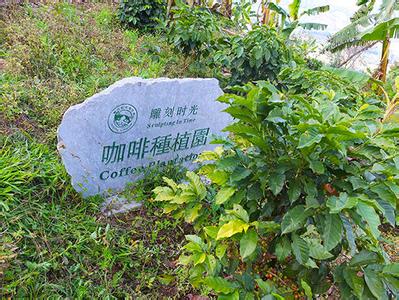The rapid growth rate of coffee is maintained by 2500000 coffee farmers around the world.
Since the 1960s, the total output of coffee in the world has increased by three times every year, and the demand has increased by 5% a year. Such a rapid growth rate is sustained by 2500000 coffee farmers in the world, and 80 to 90 percent of them are small coffee farmers, and their coffee belt is also the region with the most significant climate change in the world.
Arabica is more sensitive to climate than the stronger Robusta. Almost all commercial Arabica coffee plants come from coffee trees growing in the mountains of Ethiopia, which limits its genetic diversity and makes it particularly vulnerable to climate change. In Mexico, for example, rising temperatures bring more rain, and a torrential rain may make it too late for plants to seed. In some dry places, the harvest of coffee is also severely challenged. In central Africa, the climate is getting hotter and drier, causing flowers to fall before they bear fruit. Even if the result is successful, the coffee beans will be dry and small. To make matters worse, the natural enemies of coffee plants are more adaptable to the hot climate, the first of which is leaf rust.
Leaf rust is the most serious coffee disease, and because of the rapid growth of market demand, many farmers choose to switch from traditional shade planting to sun planting in order to achieve rapid yield growth. But this is one of the main causes of large-scale outbreaks of coffee leaf rust on coffee farms in Central America and Mexico. Coffee leaf rust destroyed coffee trees from Mexico to Peru, with Central American countries hardest hit.
Climate change will affect any part of the coffee value chain. Due to too many uncertain risks, coffee farmers and coffee companies have to spend higher costs to control the quality of coffee. Including sea and land transport, global climate change will also bring great trouble to coffee transportation. As the cost rises, the cup of coffee in the hands of consumers may become more expensive
Although Robusta is one of the three major varieties of coffee, it shows very different characteristics: the same number of coffee beans contain twice as much caffeine as Arabica, and the main flavor is very similar to wheat tea, with lower sweetness. The Italians were the first countries to use Robusta. In addition, Vietnam and Malaysia are the most used countries, while in Taiwan, they are mostly used as commercial coffee.

Important Notice :
前街咖啡 FrontStreet Coffee has moved to new addredd:
FrontStreet Coffee Address: 315,Donghua East Road,GuangZhou
Tel:020 38364473
- Prev

Yunnan Association organizes members to exchange and study in the best boutique coffee producing countries in the world.
While continuing to do a good job in the basic work of the association, Yunnan Coffee Industry Association will further enrich the content of Yunnan Coffee Wechat public platform, further increase external publicity efforts, and contribute to industry publicity; actively organize training, make use of local resource advantages, cultural advantages and policy advantages, carry out overall positioning, packaging, publicity and association organization of agricultural products with local characteristics
- Next

The global output of raw coffee beans in 2016 increased by about 1.4 million bags over last year.
The global output of raw coffee beans in 2016 increased by about 1.4 million bags over last year. Brazil is still the top coffee producer in the world, followed by Vietnam, the high producer of Robusta. Although Arabica is more fastidious about its growing environment, due to market demand, the output of Arabica this year is still much higher than that of Robusta, and the proportion is close to 7:3 in terms of global coffee consumption.
Related
- A complete list of coffee bean names and their meanings! What is Yejia Shefi coffee? Where is Mantelin coffee?
- What grade does Arida Manor Kaduai coffee beans belong to? What treatment is Arida ASD slow anaerobic sun exposure?
- The milk tea cup becomes smaller?! Overlord Tea Girl launches a new "Return to Yunnan" series
- Accused of selling counterfeit and high-priced coffee beans! Well-known boutique coffee brand "Oukelao" bowed and apologized!
- How to make espresso dumplings? Can I eat coffee and glutinous rice balls together?
- Save the unformed and stagnant powder cakes in one second! What is the problem with stagnant water in the powder bowl of the espresso machine?
- What does hand-brewed coffee stop mean? Why is it not recommended to make coffee by hand?
- Is it normal to smell like coffee? Why does coffee smell like alcohol? What's wrong with the strong smell of cold extract ice dripping ice brewed coffee?
- How to solve the problem that hand-brewed coffee extraction takes too long? Why is the water flowing so slowly when making coffee?
- The main points of making Australian white coffee, the proportion details, how does Australian white properly foam and blend the flowers?

